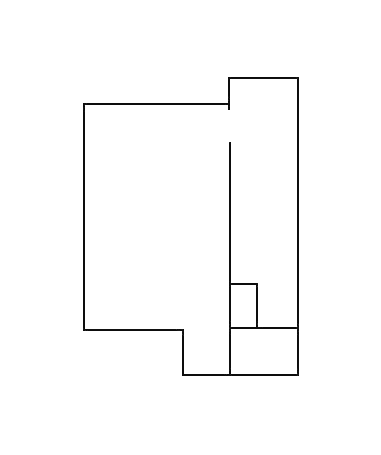Francesca Lohmann | Frozen Fluidity
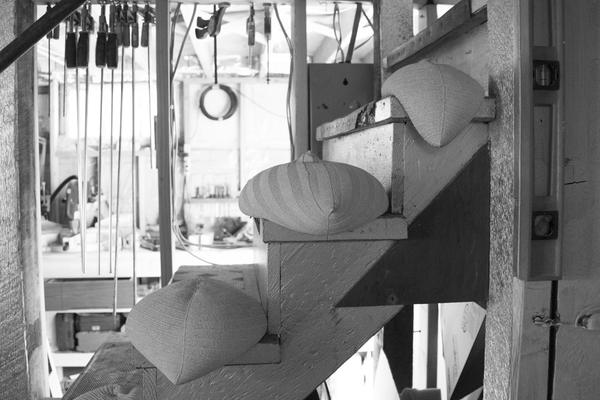
Essay by David Strand | Photographs by Serrah Russell
Francesca Lohmann’s artistic process moves like a sea cucumber liquefying its body and pouring itself through the crevice of a rock, and then solidifying once more. Plaster, a recurrent material in her practice, operates in a similar fashion. She mixes plaster powder and water into a liquid soup that she pours into fabric casings that harden into solids over a matter of minutes. The result of these contained spills, shaped by gravity into lumps and coils, often evoke anthropomorphic, animal, and alien associations while simultaneously eluding them.
“It’s not something I dictate, it’s something I instigate,” Lohmann says, crouched near a pile of flour-white plaster coils in the open-air shed that serves as one-half of her art studio. The thick mass of sagging loops is intestinal and snake-like, resembling an enormous, petrified earthworm. “I set up a situation where something can happen within a set of parameters, then use the behavior of the material, gravity, and time to get at a result that is doing something compelling or unexpected.” Her works are at once familiar yet nameless, eliciting empathy through subtleties in scale and posture.
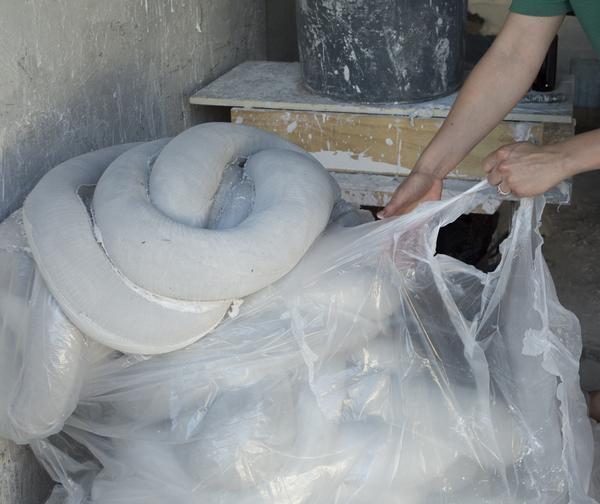
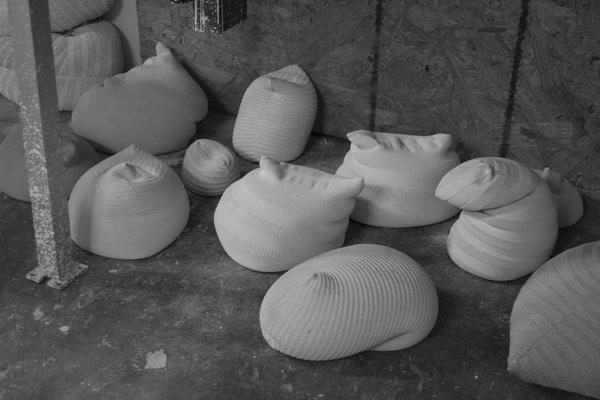
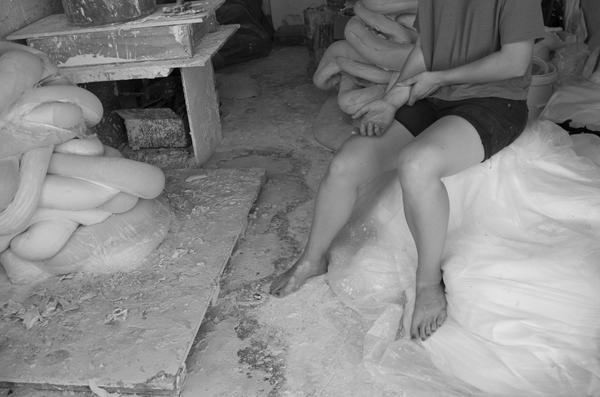
The other-half of Lohmann’s art studio, just a few steps away, is situated in a portion of her basement. If the open-air shed is dedicated to process, a lab for the messy activity of plaster casting, the basement is for presentation, a space for Lohmann to sit with her work. As we descend, ossified lumps dot each step like commas, sagging, slouching and slumping over the edge of each stair. They provoke pause, occupying a space outside of, but not divorced from language, that stirs viewers to guess the rest of the words in the sentence.
“Someone compared them to pets once,” Lohmann says about the lumps, which come in roughly two sizes: miniature, small enough to hold in one hand, or medium, large enough to need both hands. “I think it’s the relationship that we are so much bigger than they are, that they are maybe vulnerable. You want to protect them. People have very particular responses to different ones—about what their characters might be, or how they are feeling—which I find really fascinating because they are pretty simple gestures…. ”
Despite this indeterminacy, and the range of responses they provoke, the lumps like the rest of Lohmann’s works are utterly terrestrial. They are grounded by their overt physicality as expressed through their material properties.
In the center of the floor are a group of objects I immediately recognize, potatoes. However, upon closer inspection the potatoes are not quite potatoes, but iron-cast copies, with a thick seam running across their surfaces as a record of their making.
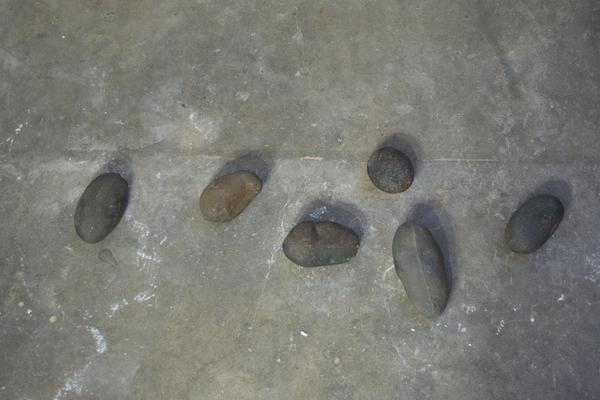
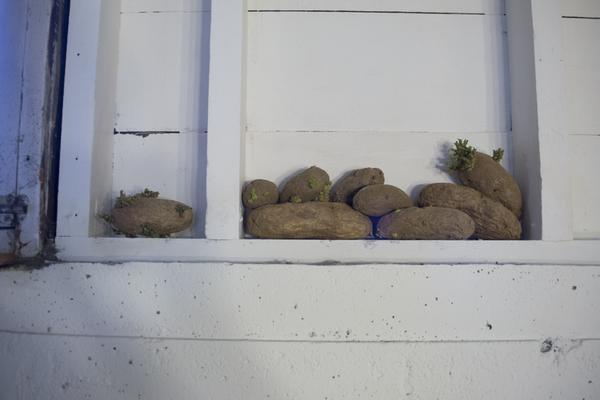
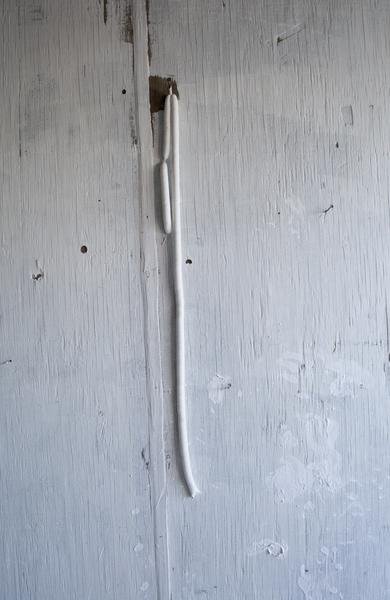
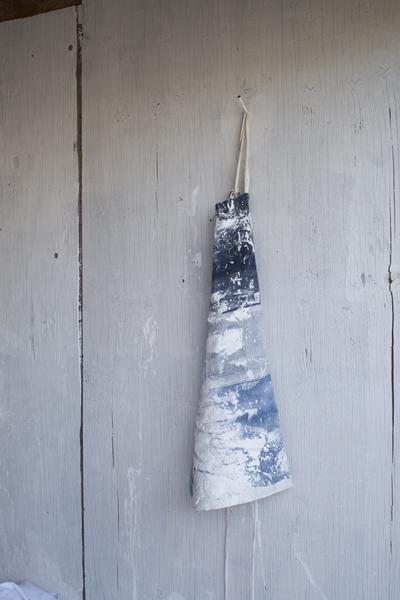
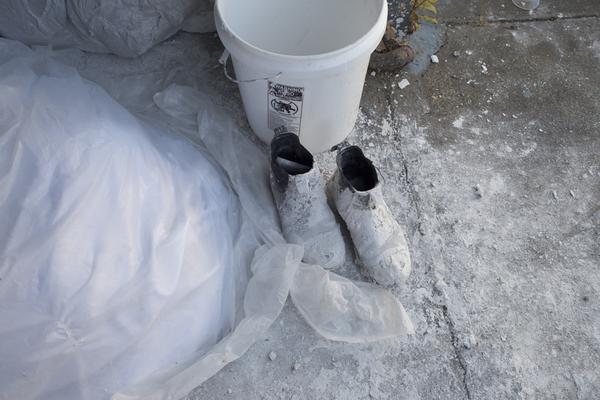
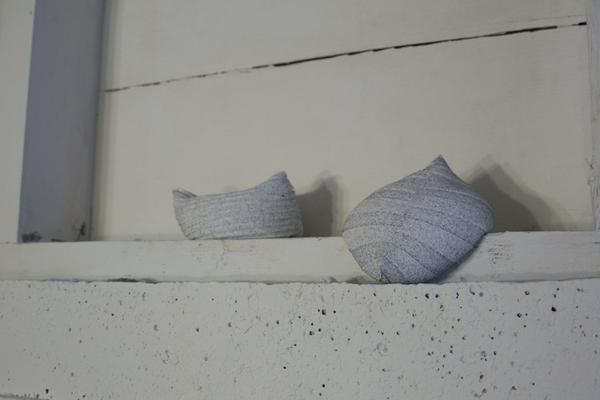
During her time in school, Lohmann ate potatoes almost daily. While she initially tried drawing portraits of them, something was lost in translation. She turned to iron casting, a process she calls “incredibly medieval in a really great way. Iron seemed appropriately heavy, earthy, and basic.” Rather than simply acting as a copy of a potato or a lump acting as the imprint of plaster poured into a sack, the works take on lives of their own; the copy is also an original, separate but related. This recognition opens up the idea of the interrelatedness of all things: as Lohmann says, “boundaries seem really obvious, but then you start to think about it and they become less obvious. You can’t completely separate anything from anything else.” She is fascinated by food for this very reason. Like plaster or a sea cucumber, food undergoes various state changes based on its interactions with its surroundings.
Leaning against a wall is a fairly large framed photograph of a lavender lump of taffy that is not quite liquid or solid, but a more sticky kind of in-between. Lohmann pulled the taffy by hand and left it on a table to congeal into a new shape as it slowly reabsorbed into itself. The paralysis of the photograph versus the glacial movements of the actual taffy evokes the dynamism of Baroque sculpture. Whereas Bernini’s frenzied and twisting sculptures of men and gods were caught in climatic moments of movement, Lohmann’s images of taffy and plaster objects are frozen in nearly imperceptible moments of flux. The excess of form and content in Baroque sculpture is edited away in favor of poetic simplicity.
This economy of means demonstrates the control Lohmann exercises in her practice while also providing space for chance and accident. “I am looking for moments of certainty; a recognition. What is the right form? It could be a million different ways but it ended up like that, which is what I like about the freezing aspect. Once something has set, I accept it or reject it; there is no fussing, no adjustments after the fact. It is the way it is. I like that. But it means that I produce a lot of waste…”
Lohmann’s work exists in a realm of productive contradiction, a state of frozen fluidity. Every sculpture or image is discrete, limited and finite, yet also always in the process of becoming, never simply being, even after the photograph has been captured and the plaster has dried. They are constantly in relation with all that surrounds them, turning subjectivity away from a single point and dispersing it across the complex web of relations that shapes the mundane in miraculous ways.
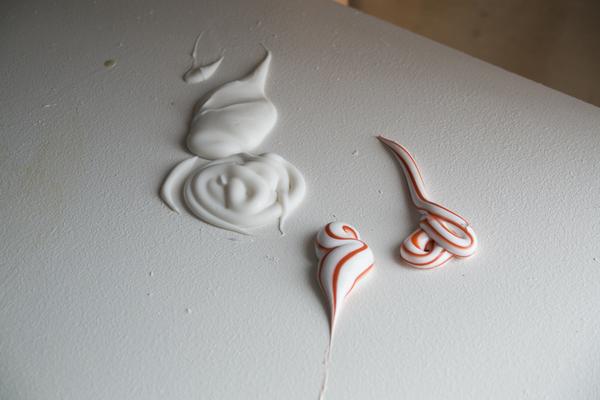
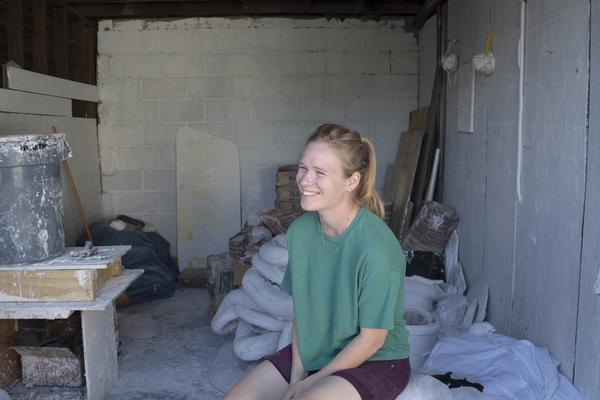
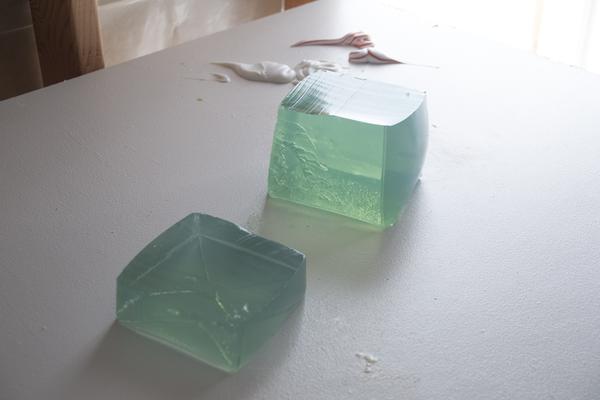
Back to In the Studio
